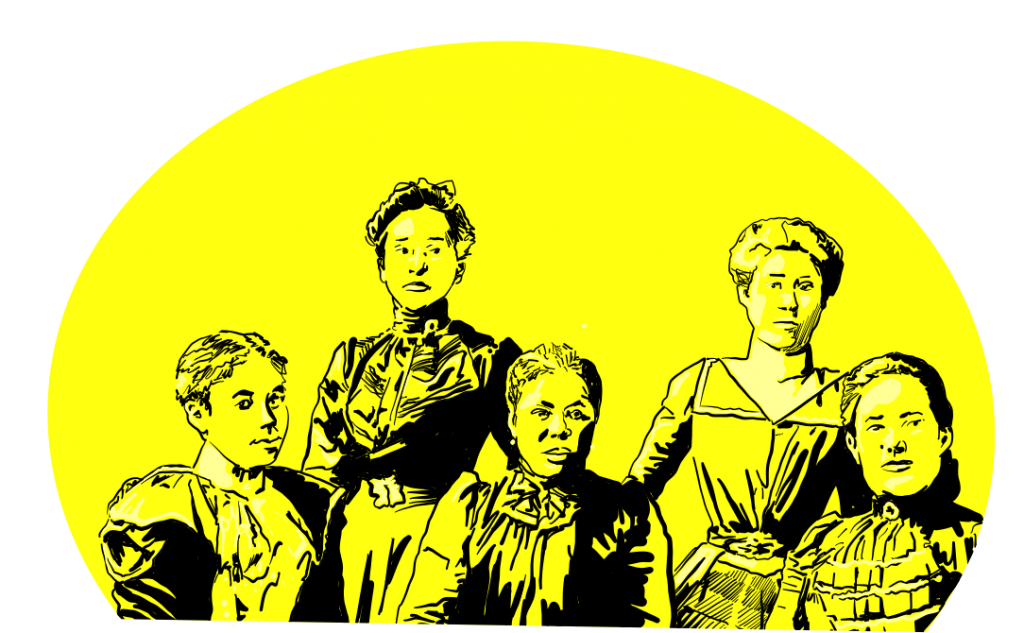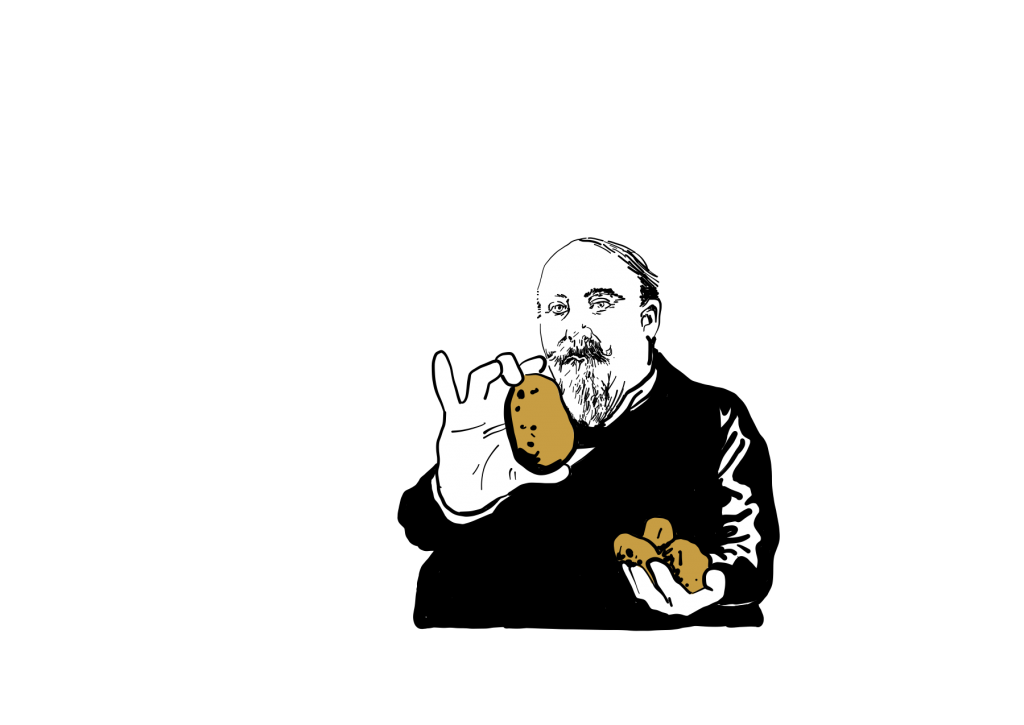

When we think about civic engagement and organizing you may immediately picture the March on Washington and think of Dr. Martin Luther King’s I Have a Dream Speech, or you might think of the Stonewall Uprising for the rights of LGBT people in New York City, or you may think of the United Auto Workers (UAW) marching in Detroit.
While the civic engagement of the Civil Rights Era is well documented, Detroit’s rich history of civic engagement began far earlier than that and much of the foundation for the Civil Rights movement began with the organizing and engagement of people in the 19th and early 20th centuries.
The Civic Efforts of Local Organizations
Civic organizations form to support the needs of certain people. For example, your block club is a civic organization that supports the needs of people on your block, a food bank in Detroit would support the needs of people who don’t have access to food in Detroit. Across the history of Detroit different civic organizations have emerged to meet the needs of Detroiters.


In 1898 a group of Black women, organized by music teacher Gabrielle Pelham, looking to support intellectual, social, and community welfare needs formed the Detroit Study Club. These women, many of whom were well educated and connected to the abolitionist work of the Underground Railroad, gathered to study and grow their knowledge of social and cultural issues. As they grew, they were also committed to community outreach and support as well as promoting progress for Black Americans. They did this in two ways: 1) inviting influential thinkers and reformers such as Booker T. Washington and W.E.B. Dubois to speak to the group and 2) creating social welfare programs such as fundraising for underprivileged children to attend school and establishing the Phillis Wheatley Home for Aged Colored Ladies in Detroit. At a time when Black Americans did not have access to the same services as others these women chose to be civically engaged by studying, promoting reform, and providing direct services.
The Jewish community also has a long history in the city of Detroit. Many members of Detroit’s wealthy society and local businesses had anti-Semitic beliefs and practices that excluded Jewish Detroiters from opportunities. The Jewish Community Council was founded in 1936 to provide civic representation for Jewish people in Detroit and was made up of representatives from other Jewish organizations in the city. At the time of its founding, the group worked to fight the spread of anti-Semitism by counteracting such messages coming from the nightly broadcasts by popular radio host Father Coughlin. They did this by using their own radio program alongside Catholic speakers, local events, and distributing flyers. Additionally, the Jewish Community Council actively worked in partnership with the National Association for the Advancement of Colored People (NAACP) and Detroit’s Black clergy to improve urban affairs in the city.
Urban affairs on behalf of Black Detroiters in the early 20th century was led by the NAACP (founded in 1912) and the Detroit Urban League (founded in 1916) which offered two distinctive models of helping Black Detroiters and civic duty. The Urban League was primarily a service organization, helping new arrivals from the south settle in Detroit by helping with jobs, housing, health care, and social opportunities. Meanwhile, the NAACP was had a specific mission to fight against racial discrimination. Their main focus was to use as many legal tools as necessary to ensure equity for all Black Americans.


Even though public education in Michigan was established in 1809, for many education still was not accessible making it a primary focus for different organizations. In Southwest Detroit and Mexicantown many people focused their civic engagement on educating the children there. Ignacio Vasquez opened a school at that time focused on educating children of immigrants. Padres de Familias was founded in 1926 and sought to connect parents with opportunities to receive a Catholic education for their children. Other organizations serving the Mexican community in Detroit, such as Círculo Mutualista Mexicano (founded 1922), focused on social and cultural services. This group in particular also offered economic support and protection for its members.
These organizations, and many more, were established by individuals and groups that identified a need within their respective communities and used civic engagement and civic action to address them.
The Power (and Influence) of the Church
The church, as an entity representing so many people of faith, also became integral in fighting for the rights of the oppressed. For those groups struggling to find their voice and place in society, the church was instrumental in providing both a place of worship, as well as a launch point for social justice.
Perhaps the most famous example of this in the Black community is Second Baptist Church.
In 1836, Second Baptist Church was formed under the guidance and leadership of 13 former slaves springing from the First Baptist Church, a segregated institution wherein many of its members experienced discrimination. The purpose of establishing the Second Baptist Church was to allow its Black members to worship without racial discrimination, but it also became a haven for the Underground Railroad and fugitive slaves.
The church’s early work in civil rights included helping thousands of migrating freed slaves in securing homes and jobs in and around Detroit after the Civil War and petitioning the Michigan government for Negro Suffrage (the right to vote) in the late 1800’s. Given the enormous education gap Black Americans faced after slavery, Second Baptist was also concerned with educating the next generation and established the first school in Detroit for Black children in 1839.
The church is located at 441 Monroe Street and still stands as one of Detroit’s best-known historical markers, which continues to hold services to this day.
Slavery in the North


You may have thought of “the North” as a region that didn’t support slavery, however that’s not entirely true. Across the country, including Detroit, resisting the laws that permitted the enslavement, abuse, and dehumanization of Black people was an act of civil resistance and civic engagement. Prior to the legal emancipation of enslaved people (in 1789), Black people who made their way north running from slavery were considered “fugitive slaves.” The Federal Fugitive Slave Act of 1793 required every state to send the people who’d escaped back to the south. In Michigan, all Black people were required to register and prove freedom with their manumission papers, except the law was lightly enforced. Thorton and Lucie Blackburn escaped from slavery in Kentucky and lived in Detroit for two years before a Kentucky resident discovered them. They were subsequently charged with being fugitive slaves. Called the Thornton Blackburn Affair, community members assisted the couple in escaping from jail to Canada, which helped establish Canada as the final stop on the Underground Railroad. The Blackburns went on to start Toronto’s first taxi company.
In 1839, the city’s attempt to return a fugitive slave from Missouri was again protested by abolitionists; this time both Black and white Detroiters protested at City Hall and were able to broker the release. The man was purchased from his owner by the citizens of Detroit and granted his freedom.
The resistance to slavery in the north grew over time and laid the foundation for The Great Migration (1915-1960), a mass movement of Black people from the south to the north. Our large African American population in Detroit is due to this migration. During World War I, 454,000 Black southerners moved north. Then, in the 1920’s, another 800,000 Black people left the south, and another 398,000 Black people migrated in 1930’s. In total, between 1940 and 1960 over 3,348,000 Black Americans left the south for northern and western cities, including Detroit. Black people traveled to the north—to Detroit—in order to find opportunities for work.
Another Christian denomination with a long history in Detroit is the Catholic church. One longtime Catholic charity in Detroit, The Society of St. Vincent de Paul, often channeled their services through different branches of government. The child caring arm of St. Vincent’s started in 1912, to transition neglected and abandoned children from the Wayne County juvenile court to new homes instead of state institutions. Most children were temporarily placed in family boarding homes for “the care, education, and protection of children.” During the depression St. Vincent de Paul provided 142 tons of flour to Detroit families in cooperation with the Detroit Department of Public Welfare. Using federal grants for half of their operations, they further provided food and clothing to 4,700 families.


Neighborhood Associations and Covenants Restricting Race
Civic engagement can take on many different forms of advocacy within the democratic and legal process of city government.
Today, neighborhood associations are known for beautification of the community, block parties, and interacting with developers or elected officials. In the 1940’s however, Detroit’s white improvement associations also played a key role in segregation by threatening –– and in some cases stopping–– Black Detroiters from moving into their neighborhoods.
Not only did these neighborhood groups picket housing developments with Black Detroiters or attack them with violence, as in the case of the Sojourner Truth homes, they further enforced home deeds with race-restrictive clauses that prevented Black people from occupying the house.
One such case was the Depression-era (1930s) McGhee vs. Sipes. Minnie and Orsel McGhee’s move into an all-white Detroit neighborhood was vehemently challenged by the neighborhood’s Northwest Civic Association, who claimed a covenant (in other words, an agreement between two or more parties) prevented homes from being sold or occupied by anyone “other than one of the Caucasian race.”
Wayne County Circuit Court and the Michigan Supreme Court agreed with the suit, delivering a temporary loss to Thurgood Marshall and the NAACP who had taken on the case. The case was later merged into Shelley vs. Kraemer and brought to the U.S. Supreme Court who struck down racially restrictive housing covenants under the Equal Protection Clause.
While some neighborhood associations fought to maintain segregation, other neighborhood associations fought for desegregation. In 1941, the Carver Progressive Club and the Eight Mile Road Civic Association attempted to stop a developer from erecting a wall between a new development and a Black neighborhood at Mendota and Birwood*, just south of 8 Mile Road. While unsuccessful, this civic engagement sought harmony and unity amongst residents near Detroit’s city limits and continued to fight for fair housing.
*Today, the Birwood wall spans Alphonso Wells Park and is adorned with a mural painted by members of the community and local artist Chazz Miller.
“The frustrations and fears of hundreds of residents of the African-American community were finding a voice in both the outspoken leaders of the Carver Progressive Club and Eight Mile Road Civic Association.”
The Mayoral Connection
Detroit’s mayors have always had their fingers on the pulse of history –– both good and bad. The City of Detroit, historically, has found itself thrust into a wide range of events that have shaped –– and have advanced –– conversations on such topics as social justice, the economy, agricultural, and civic engagement nationwide. Here are two mayors whose track records demonstrate significant civic engagement work.
Mayor Pingree’s Turn
Elected in 1889, Mayor Hazen S. Pingree was the 43rd mayor of Detroit and served during the economic depression of 1893. Some highlights in his career as mayor include:
- Running on a reform platform seeking to end public corruption
- Supporting the 8-hour work day
- Fighting private corporations
- Fighting rigged contracts between city and businesses


But he became nationally recognized for “Pingree’s Potato Patches,” a program he established to provide food for Detroiters experiencing poverty. He established an Agricultural Committee to develop the program which allowed unemployed residents to cultivate vacant lots and grow food. In its first year, 975 families used Pingree’s Potato Patches and raised $14,000 on 430 acres, cultivating potatoes, beans, squash, pumpkins, string beans, cabbage, cucumbers, corn, and beets. In 1897 and Pingree’s final year as mayor, 1,563 families participated. The plan helped the city maintain vacant lots and supported the food needs of Detroit families.
These efforts –– and others during his tenure as mayor –– show how governments can identify challenges and address them while engaging the community in civic activity.
Origin of the Idea
Every citizen has the right to push an initiative for their community and their city. In fact the famed potato patches of Hazen Pingree originated from an individual who convinced the Mayor of farming for the needy. Stationed at Ft. Wayne, Colonel of the 16th U.S. Infantry Cornelius Gardener learned to garden and it was in 1893, a time of economic crisis that he had the ear of Mayor Hazen Pingree on a ride. Passing empty land, Col. Gardener said the plots could be used to grow food for the less fortunate. Mayor Pingree was taken to the idea and made the Colonel Chair of the Agricultural Committee. With every civic effort, though comes serious duties and time. The Mayor told the Colonel to abandon his month vacation and start leading the Committee immediately.
Mayor Murphy’s Justice
One former mayor established a long history of civic service. Not only was he mayor from 1930-33, he was also a Detroit Recorder’s Court judge from 1923-1930, Michigan’s governor from 1937-39, and on the Supreme Court from 1940-1949. As mayor during the Great Depression, he focused on unemployment and access to welfare benefits for Detroiters. He remained closely connected to his legal work and established a City subcommittee dedicated to supporting legal aid.


Perhaps his popularity as mayor was rooted in the foundation of his service on the judicial bench prior to his election. It was as a Recorder’s Court judge that he tried his most famous case: The Ossian Sweet Trial. It has always been difficult to accomplish racial justice in U.S. court systems, and in criminal trials with juries judges must remain impartial while juries make decisions. However, Judge Frank Murphy used his role to establish precedent (or an example) for future trials.
A Black physician, Ossian Sweet, along with his wife, had moved into a predominantly white neighborhood in 1925. The night after the Sweets moved into their home a crowd gathered outside harassing them and throwing rocks at the house. The number of angry white protestors swelled to hundreds. Two shots were fired from inside the Sweet home, one killing a man outside named Leon Breiner. Twelve people were taken into custody from the Sweet home and 11 were charged with murder including Dr. Sweet and his brother Henry.
With help from the NAACP, renowned lawyer Clarence Darrow took the case which resulted in two hung juries, an acquittal of Henry Sweet, and dropped charges against Dr. Sweet.
How did Judge Murphy help? He allowed evidence to be introduced pertaining to the serious threats and racism from the community experienced by the Sweet family in the weeks leading up to the incident. That evidence helped establish the Sweets’ case for self-defense and could then be used for other civil rights efforts in the future.
Murphy died in 1949 leaving behind a legacy of support for the impoverished and social justice.
Why it matters
Homeowner and neighborhood associations were aggressive in their attacks and restrictions on Black residents moving to their Detroit neighborhoods. This trial and the acquittal of Ossian Sweet signified a turning point away from racial, restrictive behavior. Sweet was a doctor and property owner acting in defense of his life, and over time, Detroiters began to accept his position –– to look beyond race, embracing the “spirit of the law” inherent in civic justice. Judge Murphy’s fairness and impact on this trial is noteworthy, and set the stage for his future post as mayor of Detroit.
Women’s Health and Family Services
Across the country, much of early civic engagement surrounded health and family issues, and Detroit was no exception. The Settlement House Movement reached Detroit in 1881 when a women’s group, the Western Association, established the Detroit Day Kindergarten and Nursery Association. As industrialization (machine-based work outside the home) was growing around the world in the 1800’s, there was an increased need for family support. Additionally, as populations of people began to move for work, there emerged a need for landing points to receive services and support becoming acclimated to a new home. That’s where settlement houses came in as both community centers and residential facilities to meet the needs of the community. The Detroit Day Kindergarten and Nursery Association was established to meet the needs of working mothers but evolved over time into a full settlement: Franklin Settlements. Other settlements that existed in the city of Detroit and have evolved into community service organizations today include: the Delray Neighborhood House (now a part of People’s Community Services) and the Sophia Wright Settlement (which merged with Franklin, now the Franklin-Wright Settlement).
Many of those working mothers served by Franklin Settlements and its original daycare were finding jobs in the nursing field. The Detroit School of Nursing at Harper Hospital was established in 1884 training women to work in Detroit’s medical field. In 1886, the origins of Hutzel hospital, then Woman’s Hospital and Foundling’s Home, can be linked to a group of post-civil war women looking to provide medical care and shelter to abandoned, unwed, and widowed mothers and their babies. It was the second oldest hospital in the city of Detroit and Michigan’s first hospital for women. Woman’s Hospital was a leader in social service programming from developing Michigan’s first incubator for premature babies to offering vocational and rehabilitation programs for women released from incarceration and in 1909 it was the only laboratory in Michigan specializing in diseases affecting women and children. All of that work on behalf of women and children started with seven women who were members of the Ladies’ Christian Union.
What’s in A Name?


Final Thoughts
Starting a city is a process of establishing housing, employment, government and other services and infrastructure for the people that live there. It’s complex and the approach to that changes over time to protect what’s working, change what’s not, and create a city we all want to live in.
At the start of Detroit’s history, the city was not predominantly African American; it had a large, white immigrant population. Over time, the racial representation of the city changed while other challenges were shared in common by the various racial groups. As a country (and therefore in Detroit as well), equal rights did not exist across race, gender, or national origins. People faced poverty at many different points in Detroit’s history, they sought access to education, employment and housing and many faced discrminiation for various reasons.
So civic engagement has been essential to the city’s development into its current day make-up.
Moving forward in history, Detroit made important contributions to movements focused on change. Detroit’s civil rights and labor movement history is rich, so in the next lesson we will turn our attention to Detroit’s civic contribution in those movements.
Lesson Review
This lesson included many moments in Detroit’s history. Go back and review those moments, then choose one and draw your interpretation of it. It can be a direct representation or an abstract one. Why did you pick that moment? What made it important to the history of civic engagement in Detroit?
